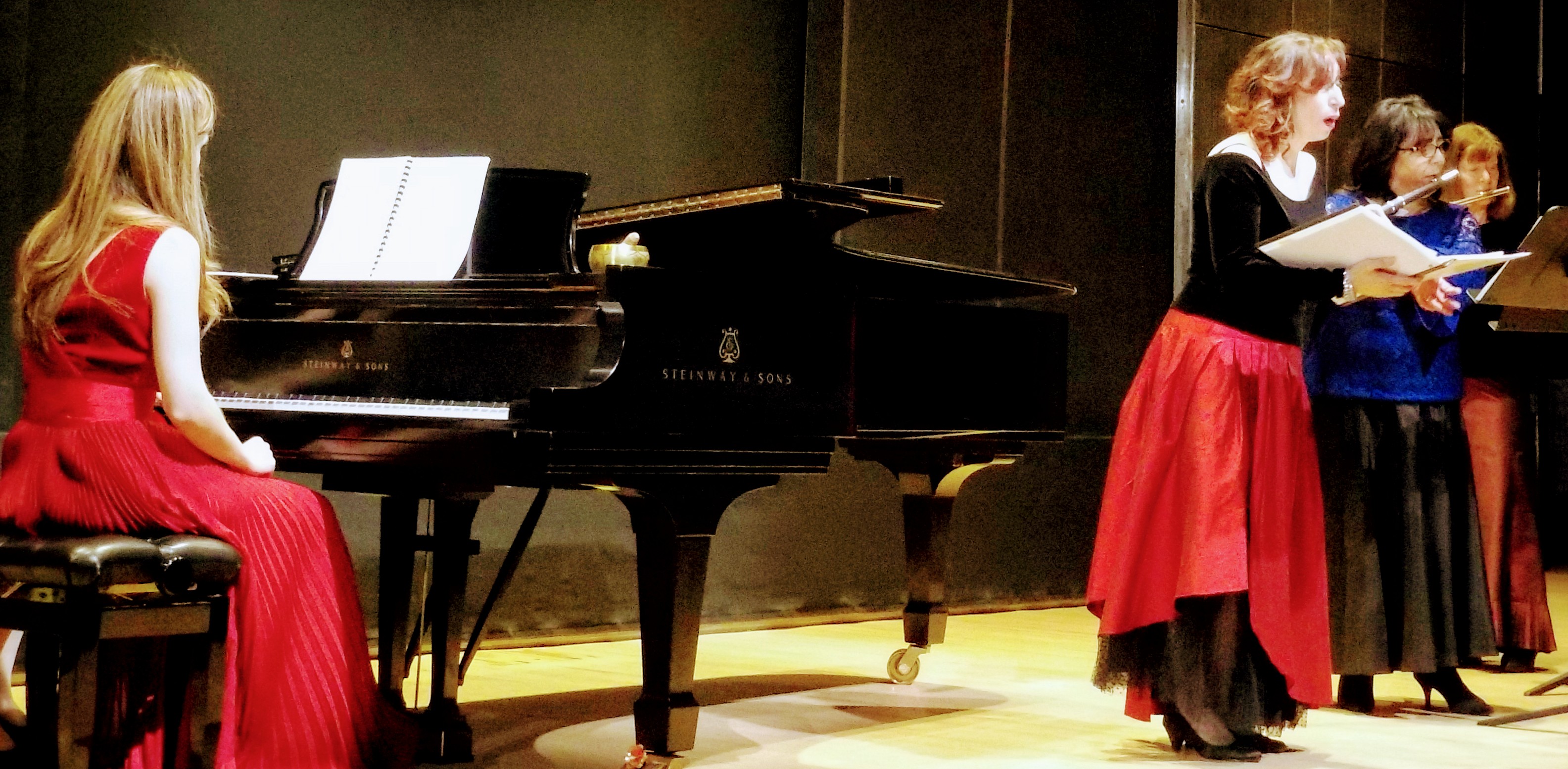There were two highlights for me in WOMEN IN MUSIC, billed as “a musical conversation between the United States and Spain” by way of Shakespeare and Cervantes inspired works composed and performed by women, one of solo piano, the other a suite of vocals.
The first was Consuelo Díez’s Ser y tiempo (2011), a piano solo played with astonishing insight by Isabel Pérez Dobarro. It’s a piece that requires insight, conceptually based on Heidegger’s Being and Time, the Cervantes reference a musical quotation from the writer’s time in Italy. Pérez goes between animation and repose; there are gestural notes (a triumphantly clenched fist, a commanding wave of the hand) between the musical ones; silence, in Díez’s composition, is clustered with sound. There’s a relationship between presence and being that Pérez lived in her performance, in sound and its absence, stillness and forward motion.
Alexa Babakhanian’s Las damas de Don Quijote (2005-2011) directly followed Ser y tiempo, displacing the metaphysics of being with embodied characters from Cervantes’ masterpiece; or perhaps it was not so much a displacement, given the “thrownness” that is so much a part of Cervantes and Shakespeare’s life-as-a-dream universes. Two singers alternated among eight female roles, changing identities with the switch of a costume element or the picking up of a prop. Nan-Maro Babakhanian and Anna Tonna gave each tale a distinct tone and character, with touches of flamenco and other Spanish forms grounding the songs in place and tradition.
It is perhaps telling that I found the Spanish of Babakhanian’s song cycle more comprehensible than the English of the Shakespeare texts set to music earlier on the program, Marga Richter’s Two Sonnets (2007) and Mary Ann Joyce’s The Raven Himself is Hoarse (2016), drawn from Lady Macbeth’s exhortation of the murder of Duncan. Although beautifully executed by Tonna and Pérez, both compositions seem to me to override the verse, art song vessels not ideally sculpted to language and situation. The songs were lovely to listen to, but didn’t fully unite word and sound, action and phrase.
In general, the paralleling of Cervantes and Shakespeare could have been stronger, given the preternatural affinity between the two: the Siglo de Oro and the Elizabethan Age are first cousins in theme, style, and sensibility. But there was a consistent tone and attitude to the event, evocative of the ages it represented. Pamela Sklar’s intricately lyrical The Chains of Love (2016), set to Cervantes’ poem Las cadenas de amor, brought on flutes (Laura Falzon and Sklar) to accompany Tonna and Pérez and open the superb second half. Diana Pérez Custodio‘s Ostinato Rap 02 (2010) lent Shakespeare a contemporary edge. Mercedes Zavala’s arresting Sansueña, exilio for piano (2016) evokes a mythical country referenced in the Quijote. Pérez captured the sense of musical and geographic exile embedded in its dramatic contrasts. It, along with the cultural and musical variances of Citara (2016), a piano solo by Rosa María Rodríguez Fernández, allowed her to scout out the bold territory to which she would return with Ser y tiempo.
The program at Bruno Walter Auditorium began with two pieces from high school students in the New York Philharmonic’s Very Young Composers project, Sunflower, by Madeline Schmidt, and Beauty and Magic, by Cassandra Stevens, each for piano and flute. They well deserved the accomplished playing of Pérez, Sklar, and Falzon, and had bit of a Renaissance sound that anticipated what came after.
WOMEN IN MUSIC was presented on Wednesday, January 24, at Bruno Walter Auditorium by Murray Hill Institute, which promotes effective and ethical leadership among women.

2 responses to “Women in Music”
[…] Women in Music […]
[…] Crítica de “A musical conversation between United States and Spain” en el Lincoln Cente… […]